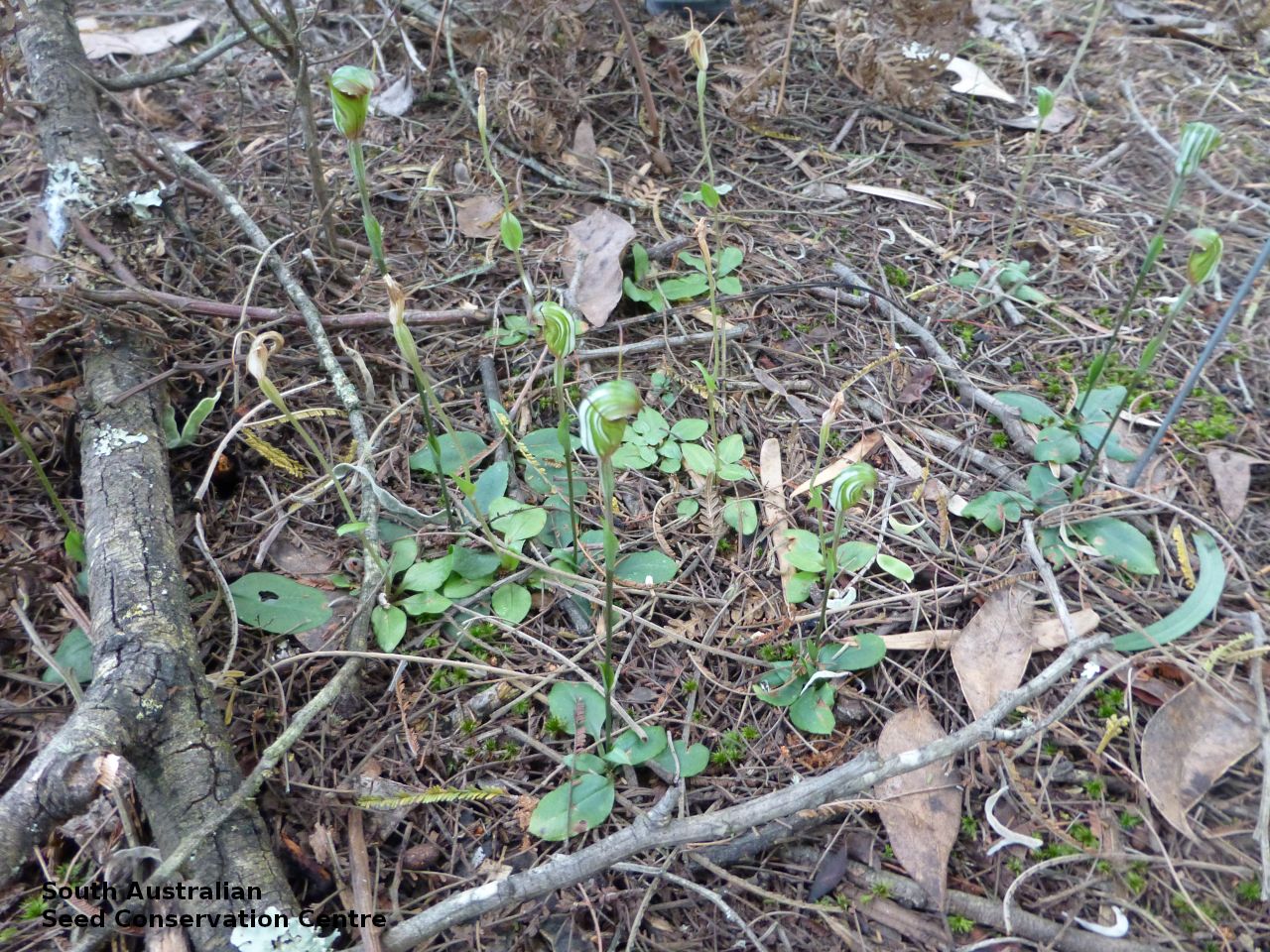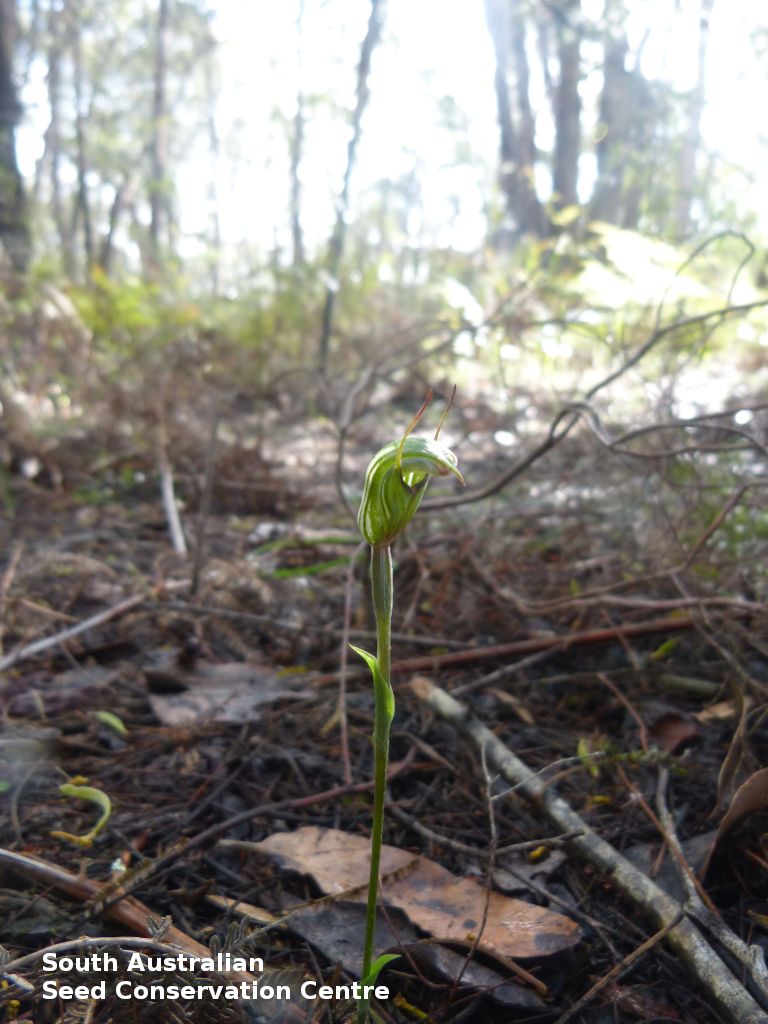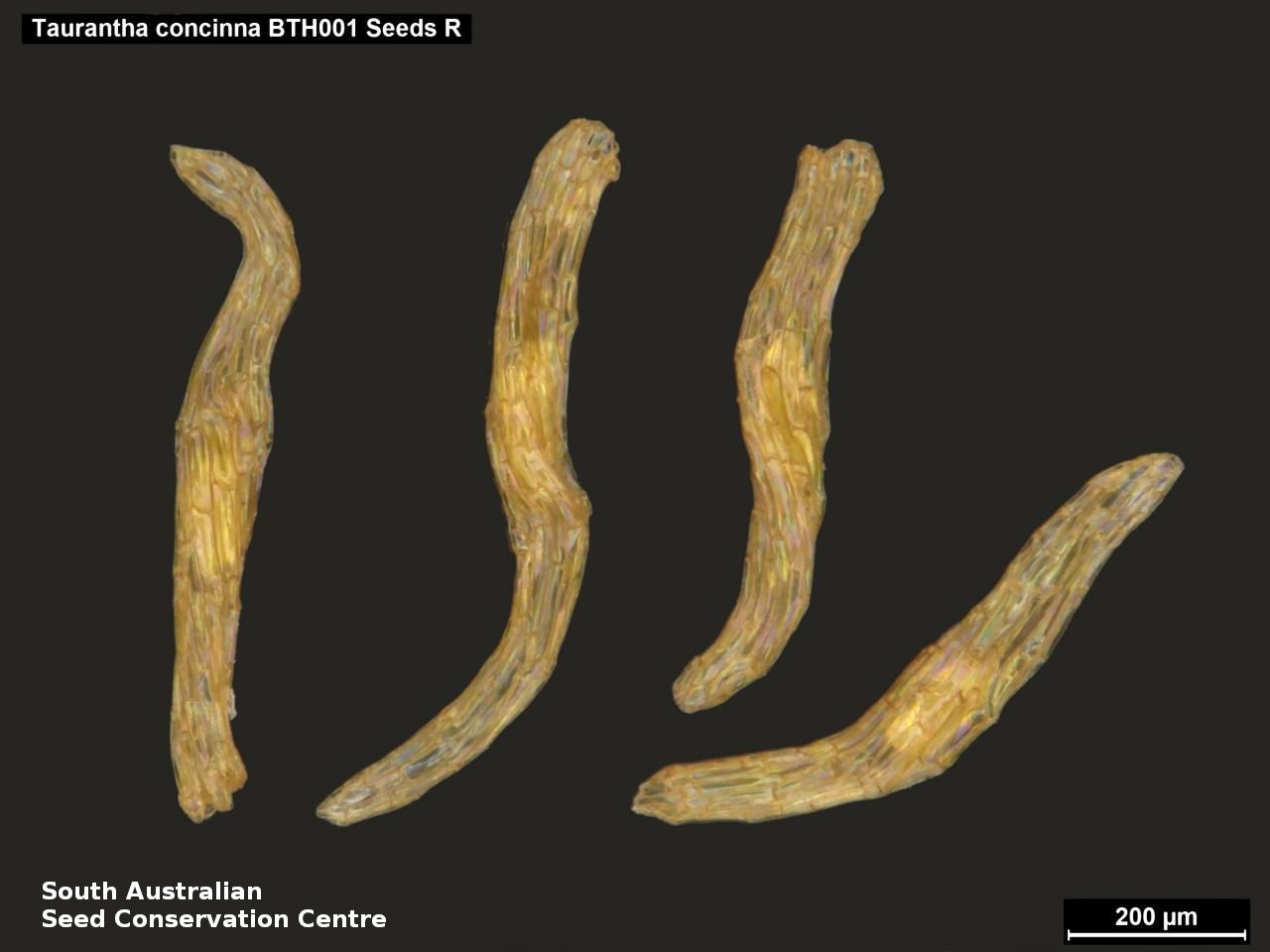




Botanical art
Prior names
Taurantha concinna
Etymology
Pterostylis from the Greek ‘pteron’ meaning a wing and ‘stylis’ meaning a style or column, referring to the prominent wings found at the top of the column in all species. Concinna from Latin meaning trim or neat, referring to the neat appearance of the plant, in particular the neatly cut labellum apex.
Distribution and status
Found in the lower South-east in South Australia near Nangwarry, growing in open grassy forest. Also found in New South Wales, Victoria and Tasmania. Native. Very rare in South Australia. Common in the other states.
Herbarium region: South Eastern
NRM region: South East
AVH map: SA distribution map (external link)
Plant description
Annual terrestrial orchid growing form an underground tuber to 20 cm tall with a basal rosette of 4-6 ovate to oblong leaves to 30 mm long and 15 mm wide each, petiolate, margins entire or wavy. Inflorescence a tall stalk with a single small, green, white striped with faint brown tonings flower. Galea nearly flat or curved forwards in the distal third, dorsal sepal with a filiform point to 116 mm long, petal margins slightly flared, lateral sepals erect, tightly embracing the galea, labellum has a distinct v-notch, lateral sepals are erect. Flowering between June and October. Fruits are brown papery ellipsoid capsule. Seeds are very small brown ellipsoid seed with a long translucent brown mesh-like covering.
Seed collection and propagation
Collect seeds between September and November. Collect fat capsules as they start to dry and turn brown. Pods will split and release the seeds quickly and will require monitoring. To increase the chances of collecting mature pods, it is recommended that a small breathable bag (ie. Organza bags) be used to enclose the developing capsules. Place the capsules in a container that will hold fine seeds and leave to dry for a few weeks or until the capsule split. Then carefully hold the capsule and tap it gently to release the seeds. Store the seeds with a desiccant such as dried silica beads or dry rice, in an air tight container in a cool and dry place, refrigerator or in liquid nitrogen. For the NVC South East Orchid Project two populations consisting of more than 190 individuals in total were recorded from the Nangwarry and Island Swamp Native Forest Reserves. Approximately 50,000 seeds (0.01 g) were banked from these two populations. Seed viability was low from the Island Swamp collection at 22%, and 43% for the Nangwarry collection. Seed germination in Pterostylis species is difficult in the absence of symbiotic mycorrhizal fungi.
| Location | No. of seeds (weight grams) | Number of plants | Date collected | Collection number Collection location | Date stored | % Viability | Storage temperature |
|---|---|---|---|---|---|---|---|
| BGA | 50,000 (0.015 g) | 6 | 14-Oct-2013 | BTH1 South Eastern | 1-Nov-2016 | 43% | -80°C |
Number of plants: This is the number of plants from which the seeds were collected.
Collection location: The Herbarium of South Australia's region name.
% Viability: Percentage of filled healthy seeds determined by a cut test or x-ray.